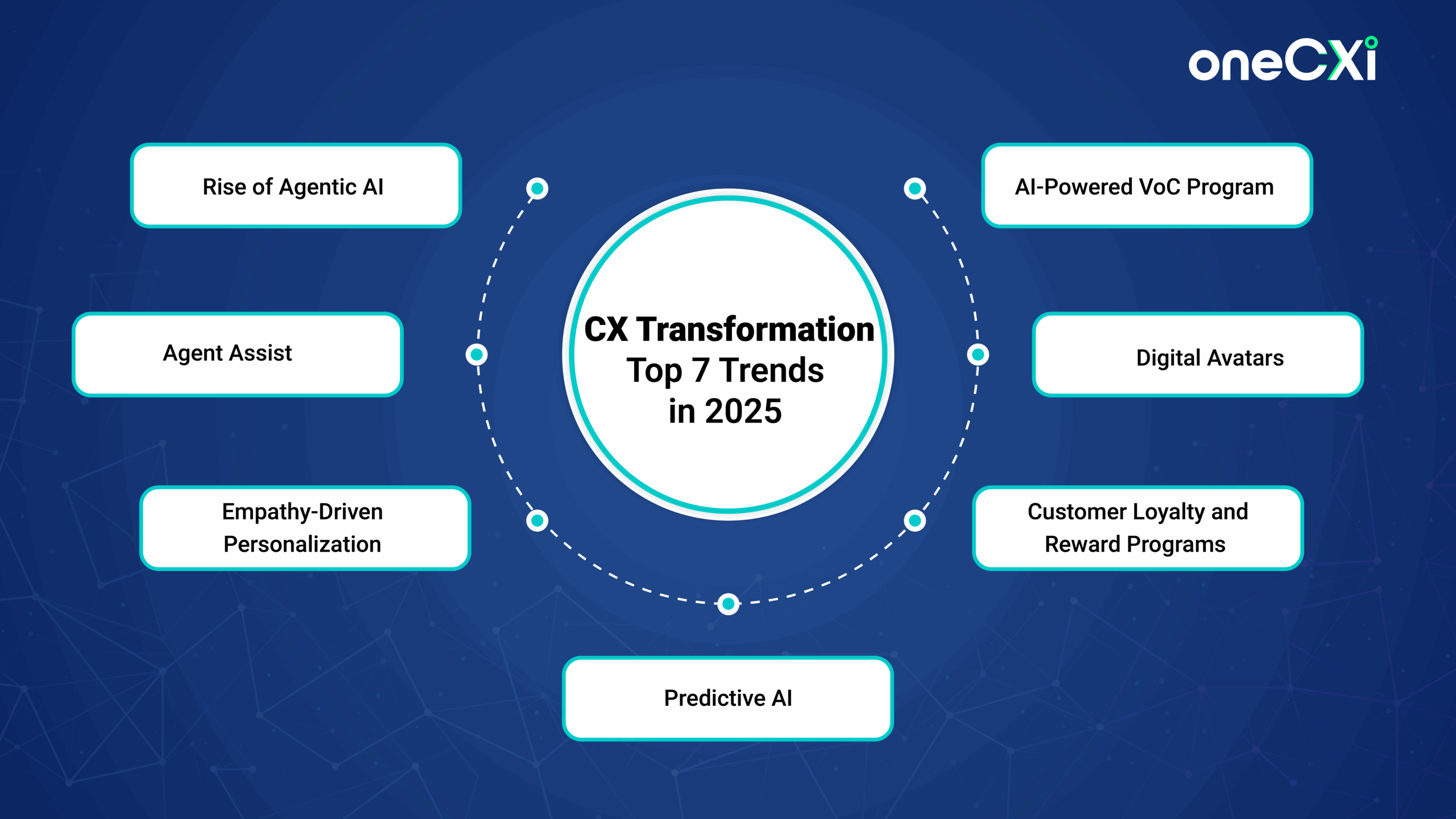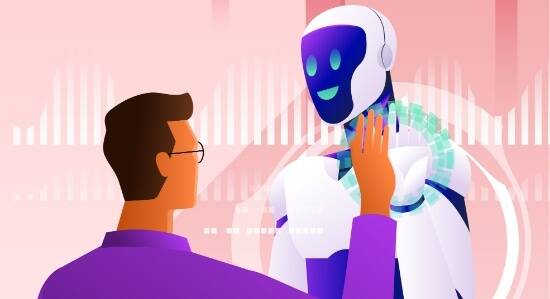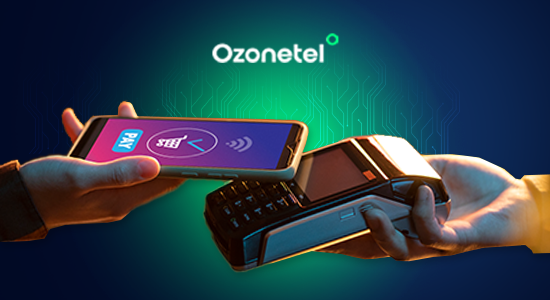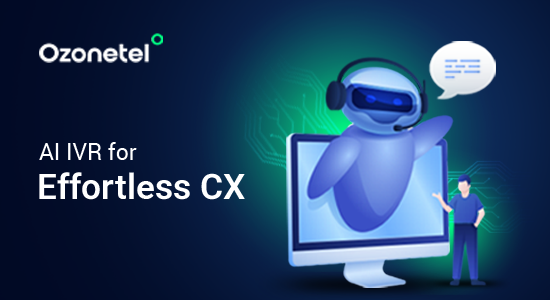- Resources
- CX Transformation: Top 7 Trends in 2025
CX Transformation: Top 7 Trends in 2025

Self-service portals and automated replies were once the benchmark of modern customer support. But in 2025, they’ve become the bare minimum. What’s emerging now is a deeper shift: support is becoming more adaptive, more contextual, and much more personalized; not just for customers, but for the teams managing those conversations.
Most support systems still fall short on three key things: context, urgency, and emotional intelligence. And that’s exactly where the gap is. This article breaks down seven clear trends shaping the future of customer experience and what to focus on if you’re building systems, teams, or products that people actually want to engage with.
In this article, we will explore:
What is Employee Experience?
Employee Experience (EX) is the overall perception employees have of their journey within an organization. It encompasses every interaction and touchpoint, from recruitment and onboarding to daily responsibilities, support systems, and eventual offboarding.
Rise of Agentic AI
Agentic AI doesn’t just follow commands, it adapts. According to Gartner, 33% of enterprise software will include Agentic AI by 2028.
Unlike traditional bots that respond to pre-set questions, Agentic AI:
- Understands context, customer intent, and long-term goals
- Plans and executes multi-step tasks (like processing refunds or updating bookings)
- Continuously learns from past conversations to refine future decisions
It acts like a proactive support agent , not a programmed assistant. This leads to faster resolutions, smarter suggestions, and more meaningful interactions.
AI-Powered VoC Program
- Analyze conversations across calls, chats, social media, and review platforms
- Detect patterns in sentiment, tone, and recurring issues in real time
- Identify “silent churn” by flagging unspoken frustration signals
Forrester reports that brands using VoC analytics see a 10–15% boost in retention and satisfaction. This isn’t about tracking ratings, it’s about surfacing insights that your customers won’t always spell out.
Agent Assist
Support agents juggle policies, products, and customer history, all under pressure. With Agent Assist powered by conversational intelligence, they get real-time prompts and context without missing a beat.
They work in the background to:
- Summarize customer context instantly
- Suggest solutions, next best actions, or articles based on similar past cases
- Draft relevant replies that agents can review and send
Digital Avatars
Digital avatars are AI-powered virtual agents with lifelike visuals, voices, and gestures. They’re not just smart, they’re relatable. Used increasingly in retail, telecom, edtech, and hospitality, they help:
- Onboard users through guided walkthroughs
- Offer real-time visual support, like virtual store assistance
- Answer common queries with more empathy than a text-based bot
Metrigy reports that over 30% of enterprises plan to adopt digital avatars by the end of 2025, a figure expected to double within three years.
The goal: reduce friction while keeping support experiences human-like and engaging.
Empathy Personalization
Personalization is expected but still often misses the mark. While 74% of customers prefer personalized experiences, they expect a little more. Empathy-driven personalization focuses on:
- Recognizing the emotional tone of the customer interaction
- Tailoring language, speed, and escalation paths based on mood and urgency
- Avoiding generic recommendations or irrelevant upsells
With AI trained on behavioral and historical data, teams can respond more thoughtfully — at scale. It’s about recognizing when to solve fast and when to slow down and listen.
Customer Loyalty and Reward Programs
With so many alternatives available, customer retention depends on more than just discounts.
In 2025, loyalty programs will be:
- Personalized to reflect user behavior, not just spending
- Integrated into apps with evolving rewards and real-time triggers
- Tied to engagement activities like feedback, referrals, and social shares
Additionally, according to Bond Brand Loyalty:
- 79% of users stay longer with personalized loyalty programs
- 73% are more likely to recommend brands with strong reward systems
If your loyalty program still runs on points-for-purchase alone, it’s time to rethink.
Predictive AI
Predictive AI helps shift CX from reactive to proactive. It enables teams to:
- Spot early signs of churn (e.g., repeated complaints, drop-off behavior)
- Proactively reach out with timely solutions or reminders
- Offer service upgrades or renewals based on customer journey signals
In fact, according to Metrigy:
- 1% of companies already using proactive outreach rely on AI
- Nearly one-third expect most of their CX to move from inbound to proactive by the end of 2025
Wrapping Up
Customer experience in 2025 isn’t about adding more channels or automating every touchpoint. It’s about giving customers what they expect: fast, contextual, and friction-free interactions, no matter where or how they reach out.
That’s exactly where Ozonetel’s CX Hub makes the difference. It brings all your conversations — voice, chat, email, and more — into one unified window. Agents get real-time context, AI handles first-level queries, and your CRM stays in sync. You can build smart IVRs, deploy bots without writing code, and route every interaction to the right team instantly.
The result? Faster resolutions, lower drop-offs, and higher satisfaction — without overloading your support team. If you’re ready to simplify and scale your CX, schedule a demo and see how Ozonetel can help your business move faster, smarter, and more aligned with your customer needs.
Lead the CX Evolution—Equip Agents with Real-Time Intelligence
Frequently Asked Questions
AI transforms omnichannel analytics by analyzing large volumes of data across channels in real time. It helps businesses predict customer behavior, personalize interactions, and automate decision-making. With AI, insights become more actionable, leading to smarter marketing, efficient operations, and higher customer satisfaction.
By connecting data from every touchpoint—website, app, social media, in-store, and more—omnichannel analytics gives businesses a full picture of the customer journey. This enables personalized messaging, quicker problem resolution, and consistent service across channels, making the experience smoother and more relevant for each customer.
Start by defining clear goals, like improving retention or increasing conversions. Map the customer journey to identify key touchpoints. Then, invest in tools that integrate data across platforms. Collect data from each channel, segment your audience, and begin analyzing patterns to guide decisions.
It provides a unified view of customer behavior, helping businesses understand what works across channels. You can tailor campaigns, improve product recommendations, and forecast trends. It also makes it easier to measure engagement, refine strategies, and deliver consistent, high-impact experiences.








